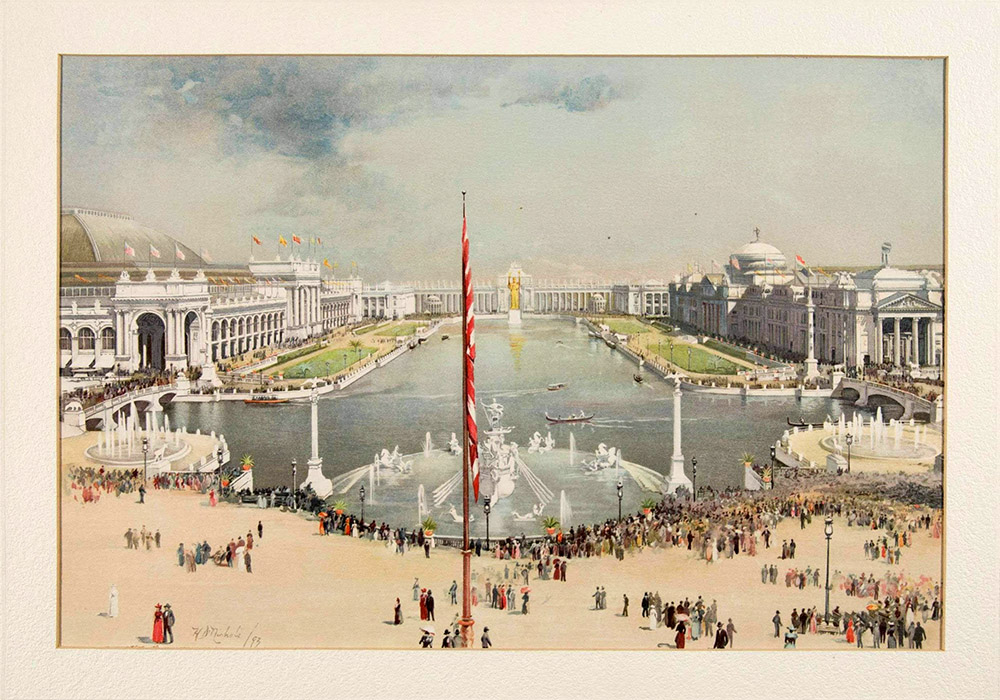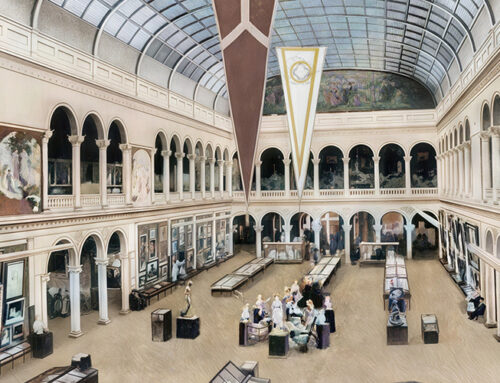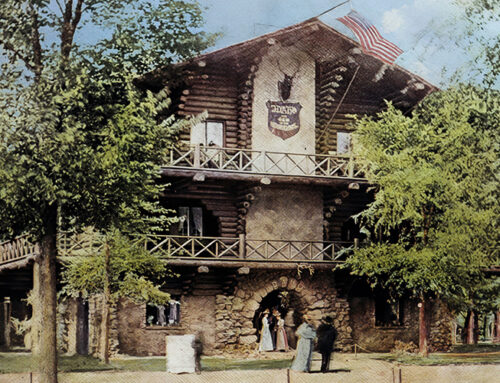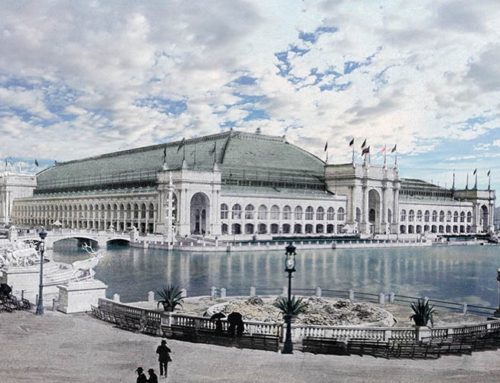What influence would the White City erected for the 1893 World’s Fair in Chicago likely have on the development of American architecture in the years to come? Pondering that question, architectural critic Montgomery Schuyler noted that Daniel Burnham, Director of Works for the Columbian Exposition, offered a vision that was able to “crystallize into a lucid and specific form a general hazy expectation.” Burnham’s made his comments in this passage for a Chicago newspaper, and Schuyler reprinted them in his essay “Last Words about the World’s Fair” (Architectural Record Jan.-Mar. 1894):
“The influence of the Exposition on architecture will be to inspire a reversion toward the pure ideal of the ancients. We have been in an inventive period and have had rather contempt for the classics. Men evolved new ideas and imagined they could start a new school without much reference to the past. But action and reaction are equal, and the exterior and obvious result will be that men will strive to do classic architecture. In this effort there will be many failures. It requires long and fine: training to design on classic lines, The simpler the expression of true art the more difficult it is to obtain.
“The intellectual reflex of the Exposition will be shown in a demand for better architecture, and designers will be obliged to abandon their incoherent originalities and study the ancient masters of building. There is shown so much of fine architecture here that people have seen and appreciated this. It will be unavailing hereafter to say that great classic forms are undesirable. The people have the vision before them here, and words cannot efface it.”
Forty years later, Louis Sullivan famously rebuked this sentiment in The Autobiography of an Idea (Press of the American Institute of Architects, Inc., 1924) in which he described the neoclassicism as “the virus of the World’s Fair” that led to “violent outbreak of the Classic and the Renaissance” across America. As “the bogus antique” visions of the White City spread to cities and town squares, Sullivan lamented the “deep-seated illusions, hallucinations, absence of pupillary reaction to light, absence of knee-reaction symptoms all of progressive cerebral meningitis: The blanketing of the brain. Thus Architecture died in the land of the free and the home of the brave.”

The Court of Honor of the 1893 World’s Columbian Exposition, facing east. [Image from Bancroft, Hubert Howe The Book of the Fair. The Bancroft Company, 1893.]






Leave A Comment